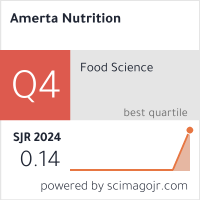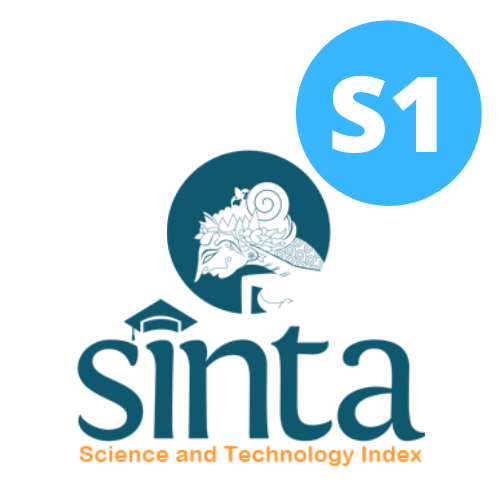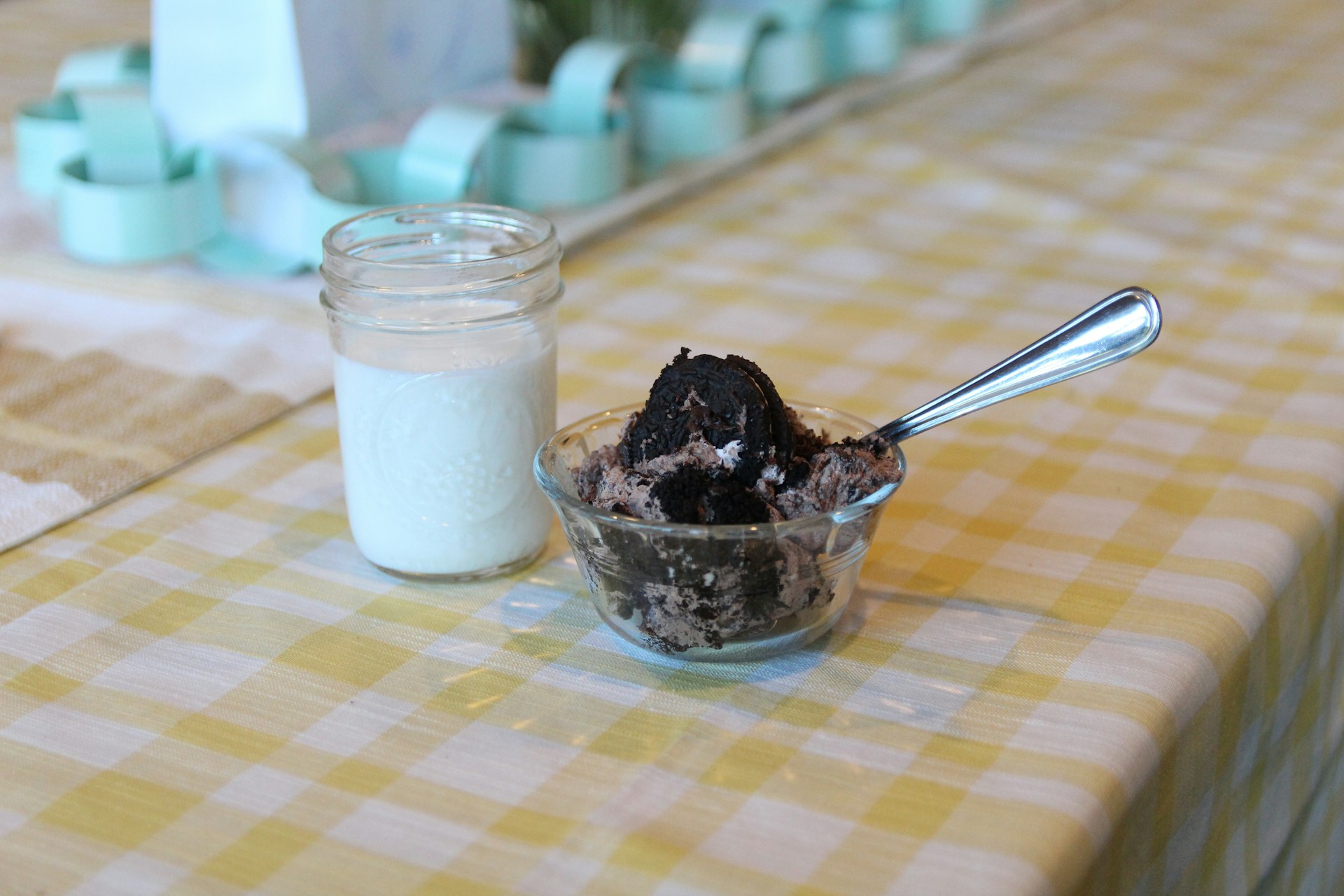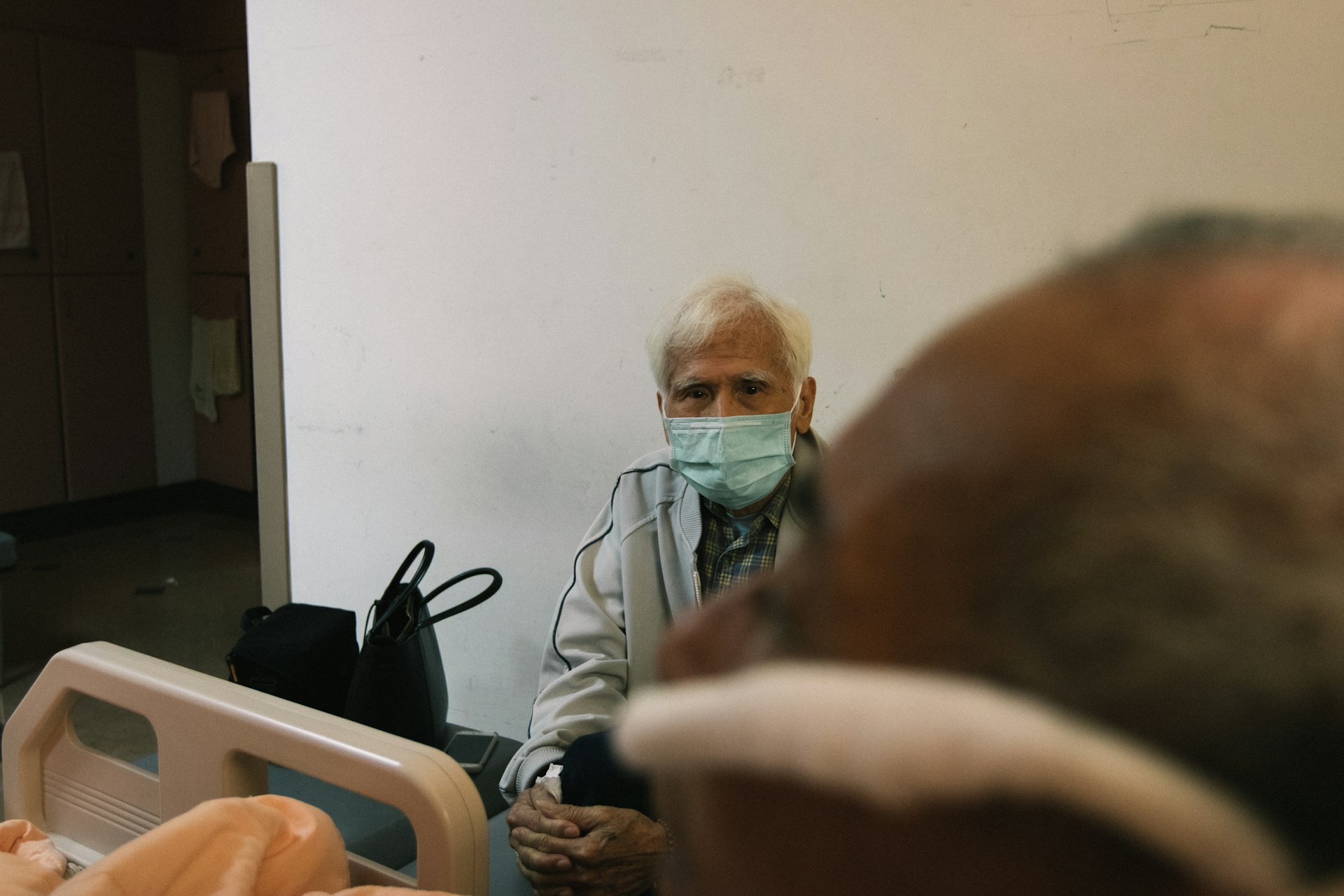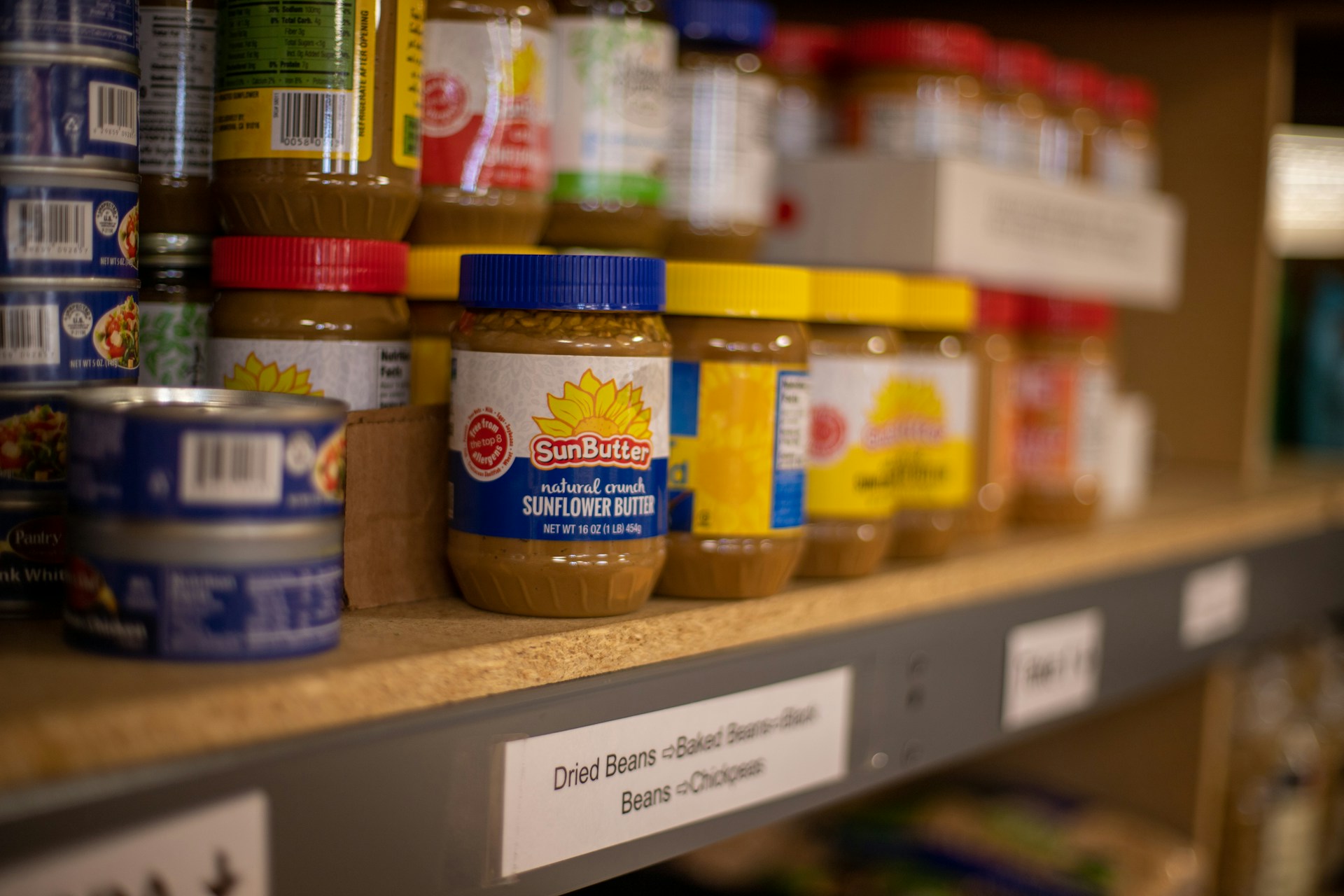Physicochemical, Microbiological and Sensory Characteristics of Goat Milk (Capra aegagrus hircus) Yogurt with Mungbean (Vigna radiata) Extract Enrichment
Karakteristik Fisikokimia, Mikrobiologi dan Sensori Yogurt Susu Kambing (Capra aegagrus hircus) diperkaya Sari Kacang Hijau (Vigna radiata)
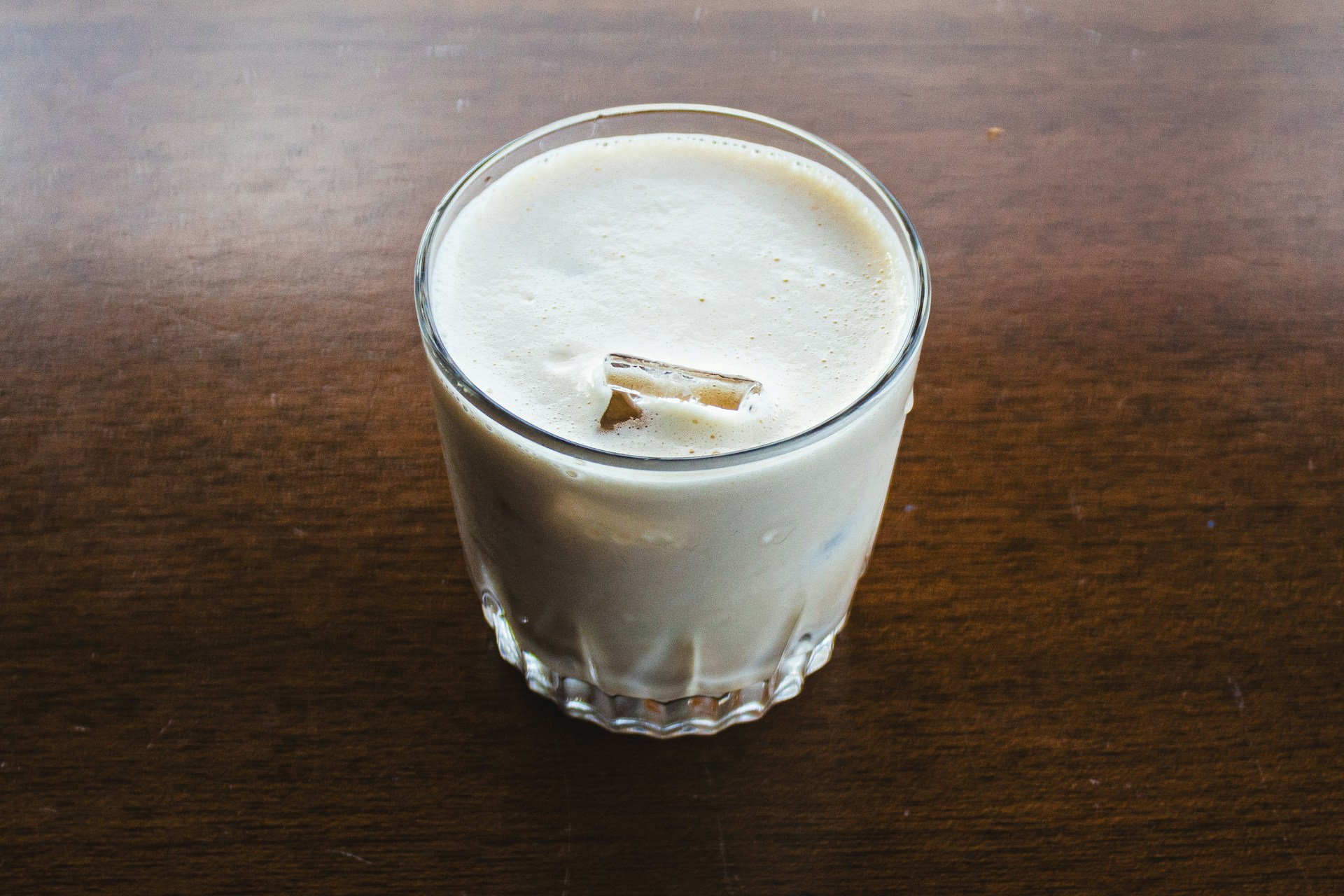
Background: Goat milk offers more superior health benefits than cow milk, while mung beans possess high nutrient contents and promote probiotic growth. Enhancing goat milk yogurt with mung bean extract through fermentation can improve product quality and consumer acceptance by mitigating the off-flavors.
Objectives: To determine the physicochemical, microbiological, and sensory characteristics of goat milk yogurt with mung bean extract enrichment.
Methods: A Completely Randomized Design (CRD) was employed with four different formulation ratios of goat milk and mung bean extract at 100%:0%, 85%:15%, 70%:30%, and 55%:45%. Physicochemical properties, such as pH, acidity, ash, total solids, protein, fat, and total sugar were analyzed. on the total amount of lactic acid bacteria (LAB) was counted as microbiological analysis component. Sensory evaluations were conducted using hedonic and hedonic quality tests. All parameters were analyzed using a one-way ANOVA, and the best formulation ratio was determined using the De Garmo method.
Results: pH of the product was 3.96 to 4.12, as acidity increased along with a higher mung bean extract. Ash, protein, fat, and total solids content varied moderately across samples, influencing the nutritional profiles of the yogurt. The amount of LAB peaked at 8.95 Log CFU/ml in the 85%:15% formulation ratio. Sensory evaluations showed the highest score of texture and overall assessments in the 85%:15% formulation ratio by achieving optimal tanginess, sweetness, and texture balance.
Conclusions: Enriching goat milk yogurt with mung bean extract can significantly influence the physicochemical, microbiological, and sensory characteristics. The formulation of 85% goat milk and 15% mung bean extract provides the more enhanced nutritional value, probiotic potential, and consumer acceptance.
Elena, H., George, B., Vlasios, G., Eleni, A., Vassilis, G. & Ioannis P.G. Functional stability of goats’ milk yoghurt supplemented with Pistacia atlantica resin extracts and Saccharomyces boulardii. Int J Dairy Technol. 73, 134–143 (2019). https://doi.org/10.1111/1471-0307.12629.
Patel, A., Bariya, A., Patel, V. & Gamit, K. Evaluation of different quality parameters of goat milk yoghurt developed using selected lactic acid bacteria. Asian Journal of Dairy and Food Research. 36, (2017). https://doi.org/10.18805/ajdfr.DR-1226.
Young, W.P., Jolethia, O., Saeed, A.H., Sulaiman, O.A., Rabin, G. & Salam, A.I. Impact of different gums on textural and microbial properties of goat milk yogurts during refrigerated storage. Foods. 8, 169-175 (2019). https://doi.org/10.3390/foods8050169.
Nafila, F., Een, S. & Debby, M.S. The effects of the addition of banana puree to the total number of total probiotic bacteria, pH value and organoleptic characteristics of the synbiotic yoghurt made from goat milk and banana puree. Journal of Industrial and Information Technology in Agriculture 2, 12-21 (2018). https://doi.org/10.24198/jiita.v2i1.17649.
Popescu, L., Bulgaru, V. & Siminiuc, R. Effects of lactose hydrolysis and milk type on the quality of lactose-free yoghurt. Journal of Engineering Science. 29, 164–175 (2023). https://doi.org/10.52326/jes.utm.2022.29(4).13.
Guowei, S., Chunju, B., He, C., Changfeng, W. & Hui Y. Fermentation optimization of goat milk with Lactobacillus acidophilus and Bifidobacterium bifidum by Box-Behnken design. Acta Sci Pol Technol Aliment. 15, 151–159 (2016). https://doi.org/10.17306/J.AFS.2016.2.15.
Costa, M. P., Balthazar, C.F., Franco, R.M., Marsico, E.T., Cruz, A.G. & Junior, C.A.C. Changes on expected taste perception of probiotic and conventional yogurts made from goat milk after rapidly repeated exposure. J Dairy Sci. 97, 2610–2618 (2014). https://doi.org/10.3168/jds.2013-7617.
Kalliopi, M., Eleni, S., Ronan, L., Maria, D., Constantina, N. & Ioannis, Z. Evaluation of sensory and in vitro anti-thrombotic properties of traditional greek yogurts derived from different types of milk. Heliyon. 3, 1-18 (2017). https://doi.org/10.1016/j.heliyon.2016. e00227.
Ranadheera, C. S., Evans, C.A., Baines, S.K., Celso, F.B., Adriano, G.C., Erick, A.E., Monica, Q.F., Tatiana, C.P., Wittwer, A.E., Naumovski, N., Juliana, S.G., Anderson, S.S., Ajlouni, S., & Vasiljevic, T. Probiotics in goat milk products: delivery capacity and ability to improve sensory attributes. Compr Rev Food Sci Food Saf. 18, 867–882 (2019). https://doi.org/10.1111/1541-4337.12447.
Yaling, Y., Ruyue, Z., Fuxin, Z., Bini, W. & Yufang, L. Storage stability of texture, organoleptic, and biological properties of goat milk yogurt fermented with probiotic bacteria. Front Nutr. 9, 1-14 (2023). https://doi.org/10.3389/fnut.2022.1093654.
Novina, R., Maimun, S., Darmawi, Indra, Z., Rinaldi, I. & Muhammad, Y. In vitro – the potential of bioinhibition of yogurt from etawa goat’s milk toward the growth of Streptococcus pyogenes bacteria. Maced J Med Sci. 11, 216–220 (2023). https://doi.org/10.3889/oamjms.2023.10180.
Dahiya, P.K., Linnemann, A.R., Van Boekel, M.A.J.S., Khetarpaul, N., Grewal, R.B. & Nout, M.J.R. Mung bean: technological and nutritional potential. Crit Rev Food Sci Nutr. 55, 670–688 (2014). https://doi.org/10.1080/10408398.2012.671202.
Ren-You, G., Ming-Fu, W., Wing-Yee, L., Kao, W. & Harold, C. Dynamic changes in phytochemical composition and antioxidant capacity in green and black mung bean (Vigna radiata) sprouts. Int J Food Sci Technol. 51, 2090–2098 (2016). https://doi.org/10.1111/ijfs.13185.
Yanyan, L., Xiaoxiao, C., & Xinbo, G. Dynamic changes of ascorbic acid, phenolics biosynthesis and antioxidant activities in mung beans (Vigna radiata) until maturation. Plants. 8, 75-88 (2019). https://doi.org/10.3390/plants8030075.
Shu, Z., Yu-Chao, F., Tian-Xin, F., Ya-Nan, S., Jing-Jing, D. & Chang-Yuan, W. Effect of processing on the phenolics content and antioxidant properties of mung bean. Cereal Chem. 98, 355–366 (2020). https://doi.org/10.1002/cche.10375.
Feng, K., Yue, L. Yuping, Z., Qinghua, Z. & Xingfeng, G. Elucidation of the potential antioxidant compound and mechanism of mung bean using network pharmacology and in vitro anti-oxidative activity. Front Sustain Food Syst. 6, 1-8 (2022). https://doi.org/10.3389/fsufs.2022.1000916.
Dongyan, T., Yinmao, D., Hankun, R., Li, L., & Congfen, H. A review of phytochemistry, metabolite changes, and medicinal uses of the common food mung bean and its sprouts (Vigna radiata). Chem Cent J. 8, 1-9 (2014). https://doi.org/10.1186/1752-153X-8-4.
Swee, K.Y., Boon, K.B. Norlaily, M.A., Hamidah, M.Y., Wan, Y.H., Soo, P.K., Noorjahan, B.A. & Kamariah, L. In vivo antistress and antioxidant effects of fermented and germinated mung bean. Biomed Res Int. 2014, 1–6 (2014). https://doi.org/10.1155/2014/694842.
Solveig, A.C., Nida, I.S., Ashlesha, D., Amanda, E.C. & Shailaja, S.P. Food subsidies, nutrition transition, and dietary patterns in a remote Indian district. Glob Food Sec. 29, 1-8 (2021). https://doi.org/10.1016/j.gfs.2021.100506.
Mahardika, D. P., Santoso, Aji, M., Maziya, Zidny, Anjani, Rahmawati, D., Hikmah, Rowihatunnufus, A., Nurbaya & Ramadhani, S. The effect of biocule starter concentration on organoleptic tests in the process of manufacturing yoghurt. in Ketahanan Pangan Lokal Melalui Rekayasa Teknologi Budidaya Tanaman dan Pengolahan Pangan (eds. Sutarman & Saidi, I. A.) (UMSIDA PRESS, 2024).
Liston, Sihombing, J. M. & Berutu, K. M. Evaluation of ph quality and water capacity of yogurt of etawa goat milk (Capra aegagrus Hircus) with the addition of mangga golek fruit juice. Jurnal Peternakan Integratif. 11, 126–133 (2023). https://doi.org/10.32734/jpi.v11i3.15110.
BSN. SNI 2981:2009 Yogurt. (2009).
Winarsi, H., Agustia, F.C., Ramadhan, G.R., Zaki, I., Putri, W.A.K., Sulistyaning, A.R., Farida, F. & Sari, H.P. Polyphenol rich mung bean (Vigna radiata) yogurt for obesity prevention. Food Res 5, 136–143 (2021). https://doi.org/10.26656/fr.2017.5(2).500.
Preetinder, K., Ruchika, Z., Ritika, M., Param, P.S., Tarsem, S.D., Amrit, K. Development and standardization of processing technique for ready-to-use lab fermented kanji mix using refractance window dried black carrot powder. Sci Rep. 13, 185-195 (2023). https://doi.org/10.1038/s41598-023-27450-5.
Olusola, L. & Sarah, O. Fermented milk products from different milk types. Food Nutr Sci. 05, 1228–1233 (2014). https://doi.org/10.4236/fns.2014.513133.
Minto, M., Randall, K.P. & Karen, A.S. Plant extract enhances the viability of Lactobacillus delbrueckii Subsp. Bulgaricus and Lactobacillus acidophilus in probiotic nonfat yogurt. Food Sci Nutr. 3, 48–55 (2014). https://doi.org/10.1002/fsn3.189.
Makwin, D.M., Jibril, E.O. & Salmat, M.S. Molecular identification of lactic acid bacteria isolated from fermented rice. AROC in Agric. 2, 06–11 (2022). https://doi.org/10.53858/arocagr02010611.
Winston, J.C., Cecilia, J.B. Nutritional content and health profile of non-dairy plant-based yogurt alternatives. Nutrients. 13, 4069-4081 (2021). https://doi.org/10.3390/nu13114069.
Miriam, M., Manuel, O., Rafael, G., Triana, B., Maria, D.R., Carmen, C., Reyes, A. & Miguel, N. Ultrafiltration of skimmed goat milk increases its nutritional value by concentrating nonfat solids such as proteins, Ca, P, Mg, and Zn. J Dairy Sci. 98, 7628–7634 (2015). https://doi.org/10.3168/jds.2015-9939.
Assan, O., Shukhrat, V., Raushan, M., Dinara, T. & Raushan, T. A study of the physico-chemical composition and technological properties of sheep and goat milk (ShGM) depending on the breed of the animal. Eureka Life Sciences. 29–38 (2022). https://doi.org/10.21303/2504-5695.2022.002606.
Saleem, M. et al. Development of functional yogurt by using freeze-drying on soybean and mung bean peel powders. Front Sustain Food Syst 7, (2023). https://doi.org/10.3389/fsufs.2023.1083389.
Marion, P.C., Maria, L.G.M., Beatriz, S.F., Vitor, L.M.S., Bruna, L.R., Claudete, C.J.C & Carlos, A.C. Consumer perception, health information, and instrumental parameters of cupuassu (Theobroma grandiflorum) goat milk yogurts. J Dairy Sci. 100, 157–168 (2017). https://doi.org/10.3168/jds.2016-11315.
Norlaily, M.A., Hamidah, M.Y., Kamariah, L., Swee, K.Y., Wan, Y.H., Boon, K.B., Soo, P.K., Mohd, P.A. & Noorjahan, B.A. Antioxidant and hepatoprotective effect of aqueous extract of germinated and fermented mung bean on ethanol-mediated liver damage. Biomed Res Int. 2013, 1–9 (2013). https://doi.org/10.1155/2013/693613.
Marion, P.C., Beatriz, S.F., Bruna, R.L., Adriana, C.O.S. & Carlos, A.C. Effect of different fat replacers on the physicochemical and instrumental analysis of low-fat cupuassu goat milk yogurts. Journal of Dairy Research. 83, 493–496 (2016). https://doi.org/10.1017/S0022029916000674.
Ruvini, L., Chathuranga, K., Rizliya, V., Chathuni, J., Pabodha, W., Ruksheela, B., Barana, C.J. & Janak, V. Hypolipidemic and hypoglycemic potential of raw, boiled, and sprouted mung beans (Vigna radiata L. wilczek) in rats. J Food Biochem. 42, e12457 (2017). https://doi.org/10.1111/jfbc.12457.
Tatik, K., Rahmaulidin, F., Yuningtyas, S. & Sulistiani. Chemical properties of vegetable yogurt with addition of amyloproteolytic enzyme Lactobacillus fermentum EN17-2 on storage time. IOP Conf Ser Earth Environ Sci. 1200, 1-8 (2023). https://doi.org/10.1088/1755-1315/1200/1/012019.
Marion, P.C., Beatriz, S.F., Adriana, C.O.S., Monica, Q.F., Robson, M.F. & Carlos, A.C. Cupuassu (Theobroma grandiflorum) pulp, probiotic, and prebiotic: influence on color, apparent viscosity, and texture of goat milk yogurts. J Dairy Sci. 98, 5995–6003 (2015). https://doi.org/10.3168/jds.2015-9738.
Hammam, A. R. A., Salman, S. M., Elfaruk, M. S. & Alsaleem, K.A. Goat milk: compositional, technological, nutritional, and therapeutic aspects: a review. Asian Journal of Dairy and Food Research. 41, 367-376 (2022). https://doi.org/10.20944/preprints202108.0097.v1.
Xinyue, X., Huaitian, C., Zhiheng, Y., Jiaxin,X., Jun, L., Jun, L., He, L. & Danshi, Z. Effects of different combinations of probiotics on rheology, microstructure, and moisture distribution of soy materials‐based yogurt. J Food Sci. 87, 2820–2830 (2022). https://doi.org/10.1111/1750-3841.16204.
Shabboo, A. & Ahmad, S.H.B. Green tea yogurt: major phenolic compounds and microbial growth. J Food Sci Technol. 52, 4652–4660 (2014). https://doi.org/10.1007/s13197-014-1670-6.
Shunekeyeva, A., Alimardanova, M. & Albertovich, M. A. Chemical composition, texture and sensory evaluation of yogurts supplemented with amaranth flour. Am J Anim Vet Sci. 16, 136–143 (2021). https://doi.org/10.3844/ajavsp.2021.136.143.
Diana, D.S., Giuseppina, G., Giulia, C. & Maria, T.F. Improvement of the sensory characteristics of goat milk yogurt. J Food Sci. 84, 2289–2296 (2019). https://doi.org/10.1111/1750-3841.14692.
Maija, M., Taru, S., Kati, K., Alissa, N.A., Amanda, G.K., Laila, S. & Riitta, P. Physicochemical properties and mouthfeel in commercial plant-based yogurts. Foods. 11, 941-955 (2022). https://doi.org/10.3390/foods11070941.
Caroloina, A.C., Paula, M.V., Ramiro, N.C. & Adriana, N.R.Chemical characterization, texture and consumer acceptability of yogurts supplemented with quinoa flour. Food Science and Technology. 37, 627–631 (2017). https://doi.org/10.1590/1678-457X.27716.
Lutfiye, Y. & Esra, T. Evaluation of instrumental and sensory measurements using multivariate analysis in probiotic yogurt enriched with almond milk. J Food Sci Technol. 59, 133–143 (2021). https://doi.org/10.1007/s13197-021-04994-w.
Da-Hee, K., Won-Young, C., Su-Jung, Y., Sung-Hee, C & Chi-Ho, L. Effects of lotus (Nelumbo nucifera) leaf on quality and antioxidant activity of yogurt during refrigerated storage. Food Sci Anim Resour. 39, 792–803 (2019). https://doi.org/10.5851/kosfa.2019.e69.
Hanyu, Z., Zheng, C., Geqing, L., Xiaoqian, Y. Yujing, H. & Wenxia, Z. Physicochemical, sensory, and antioxidant characteristics of stirred‐type yogurt enriched with Lentinula edodes stipe powder. Food Sci Nutr. 11, 6231–6240 (2023). https://doi.org/10.1002/fsn3.3563.
Dias, P.G.I., Sajiwani, J. W. A. & Rathnayaka, R. M. U. S. K. Consumer perception and sensory profile of probiotic yogurt with added sugar and reduced milk fat. Heliyon. 6, 1-7 (2020). https://doi.org/10.1016/j.heliyon.2020.e04328.
Anna, M., Dorota, Z. & Malgorzata, Z. Probiotic monocultures in fermented goat milk beverages – sensory quality of final product. Int J Dairy Technol. 72, 240–247 (2019). https://doi.org/10.1111/1471-0307.12576.
Sameh, Y., Mai, G., Ahmed, H., Sameh A. Improving the quality and sensory properties of drinkable yogurt made from goat and sheep milk with date puree. Alexandria Science Exchange Journal. 45, 35–45 (2024). https://doi.org/10.21608/asejaiqjsae.2024.340220.
Garyfallia, K., Rosario, M., Gloria, P., Cristina, S.G., Juan, L., Samuel, C., Marie, G., Giovanna, B., Jose, P., Consolacion, M., Pilar, A., Maria, L., & Jesus, M.P. Germination improves the polyphenolic profile and functional value of mung bean (Vigna radiata L.). Antioxidants. 9, 746-767 (2020). https://doi.org/10.3390/antiox9080746.
Copyright (c) 2025 Amerta Nutrition

This work is licensed under a Creative Commons Attribution-ShareAlike 4.0 International License.
AMERTA NUTR by Unair is licensed under a Creative Commons Attribution-ShareAlike 4.0 International License.
1. The journal allows the author to hold the copyright of the article without restrictions.
2. The journal allows the author(s) to retain publishing rights without restrictions
3. The legal formal aspect of journal publication accessibility refers to Creative Commons Attribution Share-Alike (CC BY-SA).
4. The Creative Commons Attribution Share-Alike (CC BY-SA) license allows re-distribution and re-use of a licensed work on the conditions that the creator is appropriately credited and that any derivative work is made available under "the same, similar or a compatible license”. Other than the conditions mentioned above, the editorial board is not responsible for copyright violation.






